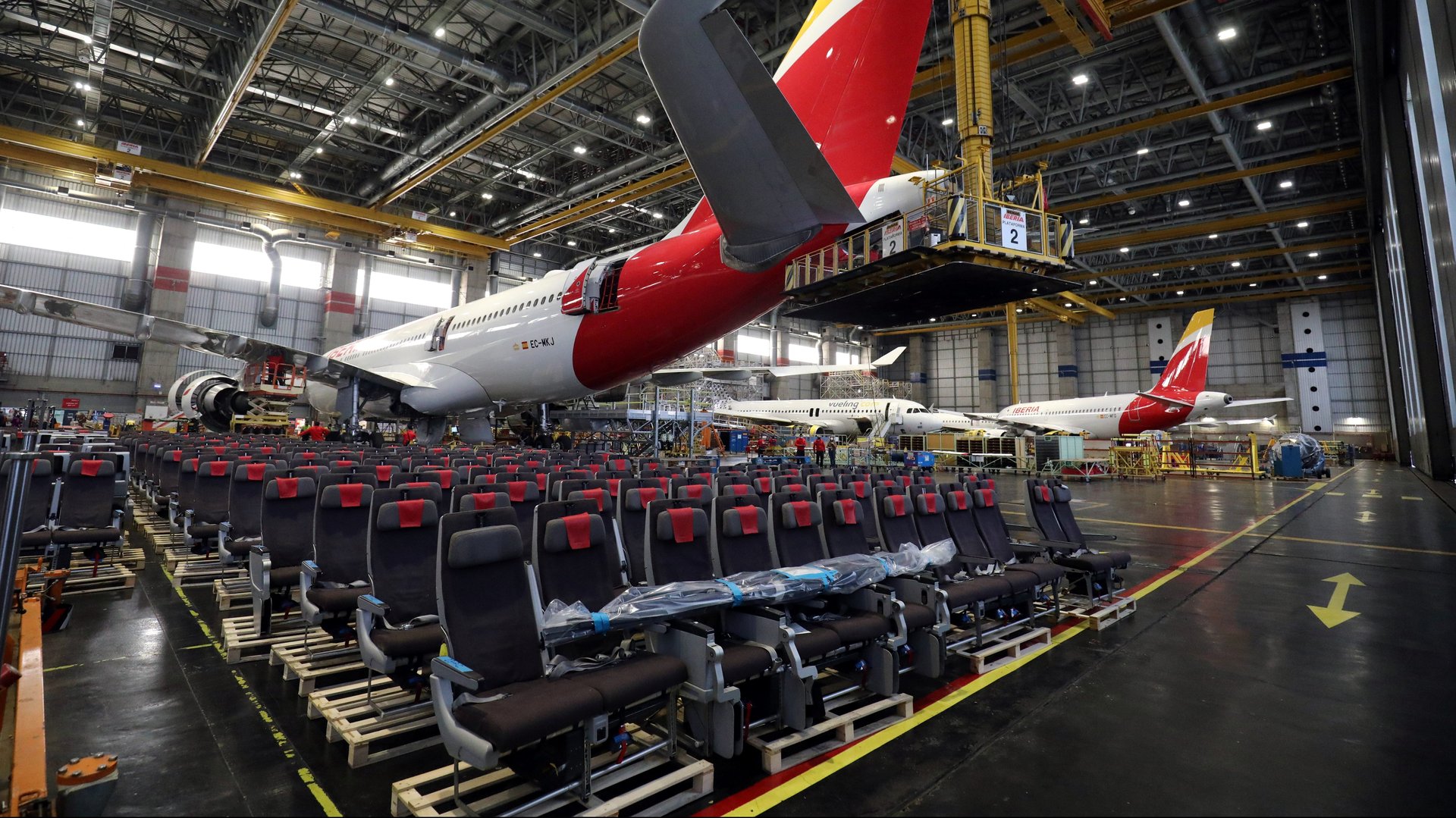Air Canada is gearing up for a new phase of the pandemic
As air travel collapsed in the early days of the pandemic, many passenger planes got a makeover, with airlines stripping out seats and converting empty cabins into cargo holds. At first, these so-called “cabin freighters” airlifted ventilators, masks, and other crucial medical supplies to hard-hit hospitals. Eventually, as factory shutdowns and port closures tangled the world’s supply chains, the planes transported everything from mayonnaise to dog food.


As air travel collapsed in the early days of the pandemic, many passenger planes got a makeover, with airlines stripping out seats and converting empty cabins into cargo holds. At first, these so-called “cabin freighters” airlifted ventilators, masks, and other crucial medical supplies to hard-hit hospitals. Eventually, as factory shutdowns and port closures tangled the world’s supply chains, the planes transported everything from mayonnaise to dog food.
Air Canada was one of the first airlines in the world to yank the seats out of part of its passenger fleet in April 2020, three months after the first confirmed Canadian covid case. The seatless configurations served the company well as chaos in the container ship industry drove up the price of air cargo.
But now, Air Canada is betting on the start of a new phase of the pandemic. To prepare, it’s reinstalling seats in the 11 planes it converted to seatless cabin freighters and will return them to passenger service by May.
“I believe the era of cabin freighters is over. They served a great service at a poignant time,” Air Canada cargo head Jason Berry told The LoadStar. “However, we see the need and demand for this configuration coming to an end by [the third quarter], as passenger capacity begins to return closer to pre-pandemic levels.”
Passenger air travel is recovering as the omicron variant subsides
Canada, like much of the world, is emerging from its most dramatic spike of covid cases yet, fueled by the highly infectious omicron variant. By the end of January, cases had dropped by more than half from their peak that month.
Before omicron, Canadian passenger air travel had been recovering from its pandemic lows. Demand fell sharply once again during the worst of the omicron wave, but by the end of January, daily air traveler numbers once again started to tick up.
Cargo is no longer airlines’ biggest moneymaker
Early in the pandemic, cargo flights offered airlines a lifeline. Between March and June of 2020, cargo was Air Canada’s biggest moneymaker, and it remained a big piece of the airline’s total revenue for the next year. But as travelers returned to the air at the end of 2021, passenger revenue shot up and left cargo behind.
Air freight rates are still high, though, and for now Air Canada is still happy to cash in on the world’s supply chain woes. The airline has doubled its quarterly cargo revenue from $140 million before the pandemic to $290 million in the third quarter of 2021. But there are some early signs that air cargo prices are softening and may fall later in the year.
Air freight rates are inconsistent on the routes between Toronto, one of Air Canada’s main hubs, and the Chinese airports where many of Air Canada’s converted cargo planes are destined. Data from the freight booking platform Freightos show that prices hit big peaks in July and October but haven’t maintained their highs.
In light of wavering air freight rates and recovering passenger demand, Air Canada is betting we’re about to enter a world in which air travel looks a bit more like it did before the pandemic: Passengers will return to the air, cargo will return to the sea, and planes will once again be full of seats.